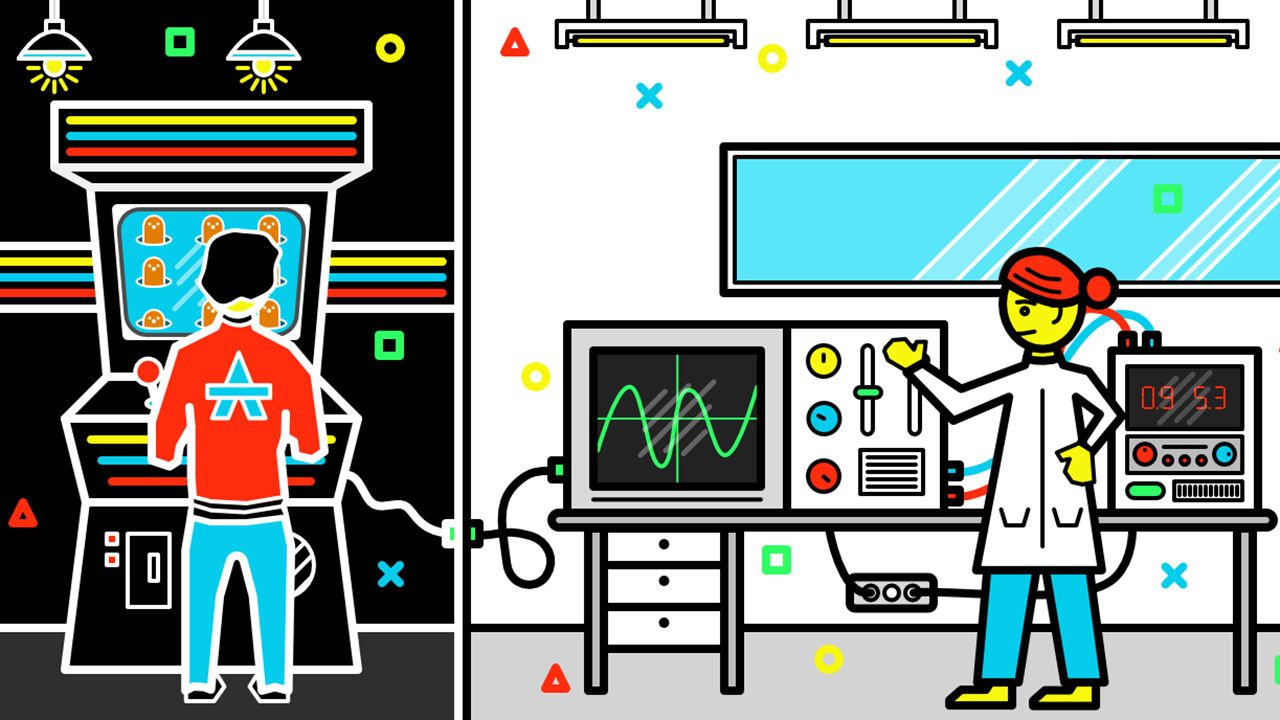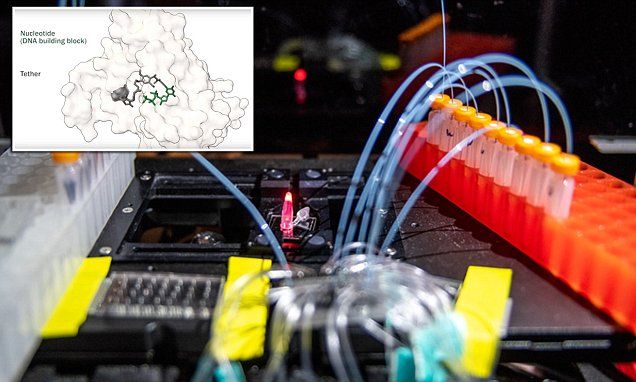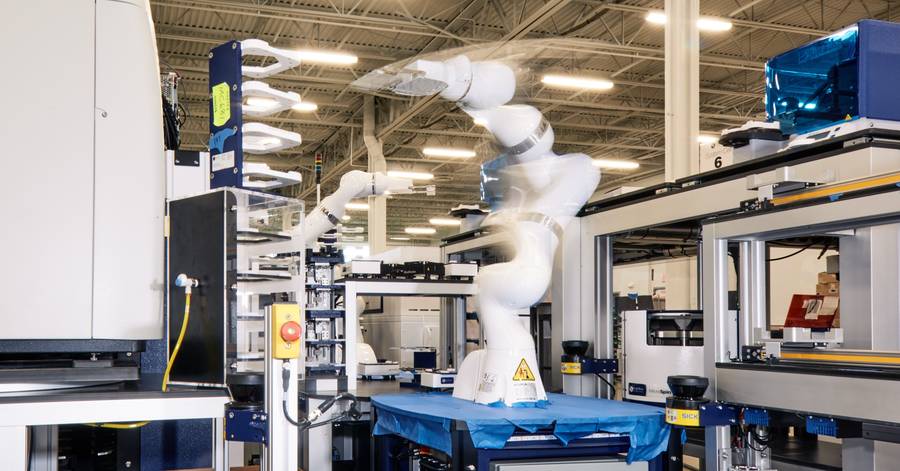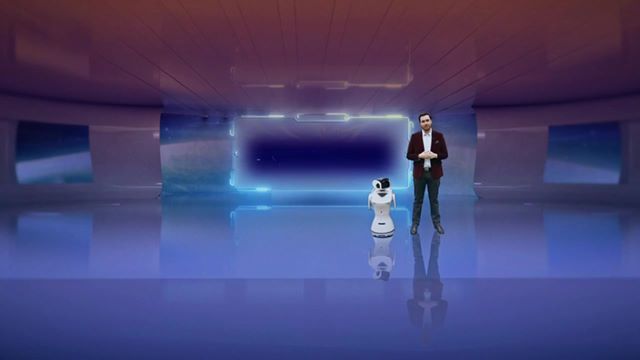Scientists used stem cells to grow a miniature model of a Neanderthal’s brain for the first time. The tiny blob of neurons reveals what makes us different.
Renewable resources are great, but they bring a new element of uncertainty to a power grid. This element can lead to failure in surprising ways, according to a new paper.
A team of researchers built a model of power grids that transport electricity from solar and wind power. That means that there are places where the grid receives fluctuating inputs of power, since levels of sunlight and wind and vary.
A team of researchers from ETH Zurich and the University of Basel in Switzerland and Institut Universitaire de Technologie in France has that found that embryonic kidney cells engineered to produce insulin when exposed to caffeine were able to reduce glucose levels in mouse models. In their paper published in the journal Nature, the group describes their efforts and how well it worked in the mouse models.
People with diabetes suffer from higher than normal levels of glucose in the blood, which can lead to a host of health problems. Current treatments include drugs that make cells more sensitive to insulin, or injection of insulin to make more of it available to cells that need it. In this new effort, the researchers have developed a new way to get more insulin into the body when it is needed most.
Instead of adding insulin externally, the researchers engineered embryonic kidney cells to produce it—but only when they were exposed to caffeine. The team chose caffeine because it has been so extensively studied and because the majority of people consume caffeinated beverages, such as coffee and soft drinks. They point out that caffeine is also a substance that appears very rarely in other foods, making its ingestion easy to regulate. The engineered cells were covered with a material that protected them from the immune system and were then put into a device that was implanted into the abdomens of mice that had been engineered to have diabetes. The researchers note that glucose levels tend to spike after people (and mice) eat sugar or food material that the body converts to sucrose. Thus, the optimal time for giving the mice caffeine would be after eating.
A revolutionary new DNA tool could help take humanity a step closer to eternal life. The device (pictured) pioneers a new technique that makes it cheaper and easier to synthesise genes ‘overnight’, say scientists — a process that normally takes several days.
Scientists at the University of California at Berkeley said it could lead to ‘DNA printers’ in research labs that work like the 3D printers in many modern workshops.
‘If you’re a mechanical engineer, it’s really nice to have a 3D printer in your shop that can print out a part overnight so you can test it the next morning,’ said UC Berkeley graduate student Dan Arlow.
How to Solve the Housing Crisis
Posted in computing, engineering, habitats
Be one of the first 73 people to sign up with this link and get 20% off your subscription with Brilliant.org! https://brilliant.org/realengineering/
Listen to our new podcast at:
Showmakers YouTube channel at: https://goo.gl/Ks1WMp
Itunes: https://itun.es/us/YGA_ib.c
RSS and Libsyn Audio is available on our site: https://www.showmakers.fm/
Get your Real Engineering shirts at: https://store.dftba.com/collections/real-engineering
Editing Laptop: http://amzn.to/2GKXqb7
Camera: http://amzn.to/2oyVNp9
Microphone: http://amzn.to/2HOxVXu
Patreon:
Humanity is made of individuals; preserving the life of individuals preserves humanity. Thus, life extension and the preservation of our species aren’t incompatible.
What is it that really matters: preserving individual lives or preserving humanity? Is it more important to grant individuals the option to live as long as they’d like in good health, or is it more important to ensure the preservation of our species? This sort of question isn’t unheard of in the context of discussions of pros and cons of rejuvenation biotechnology; at times, when presented with the possibility of indefinite lifespans, some people reply that focusing on the preservation of our species is more important. This observation is reminiscent of the “other priorities” objection, and one could respond to it in the same way. However, this issue is also worth examining from other angles.
Quick comeback: the two goals aren’t incompatible
A practical remark to make here is that preserving individual lives automatically preserves the human species because the species only exists as long as there are humans. Not everyone agrees that having a population of individuals that live indefinitely is “good for the species”—be it for fear of overpopulation or of cultural stagnation—but this concept is rather vaguely defined and not objectively measurable. However, here we are stepping into a different territory, one that has been explored in other articles, so we won’t go there in this one.
Companies like Eli Lilly & Co. and GlaxoSmithKline PLC are investing in automation with the hope of transforming drug discovery from an enterprise where humans do manual experiments to one where robots handle thousands of samples around the clock. This automation will be key to developing better therapies more efficiently, drug companies say, as research and development becomes more labor intensive amid the push toward more-tailored…
Avances — Domingo 10 de junio
Posted in futurism
📱 🔭 📡 Empieza un nuevo capítulo de #Avances, donde junto a Daniel Silva conocemos más sobre tecnología e innovación.
For the June edition of Journal Club, we will be taking a look at the recent paper entitled “Changes at the nuclear lamina alter binding of pioneer factor Foxa2 in aged liver”.
If you like watching these streams and/or would like to participate in future streams, please consider supporting us by becoming a Lifespan Hero: https://www.lifespan.io/hero
https://onlinelibrary.wiley.com/doi/abs/10.1111/acel.12742









